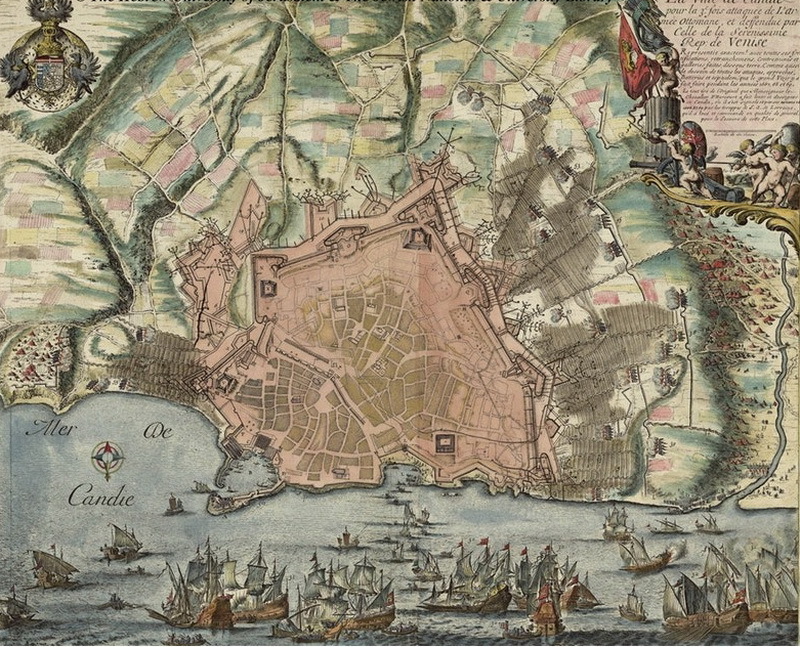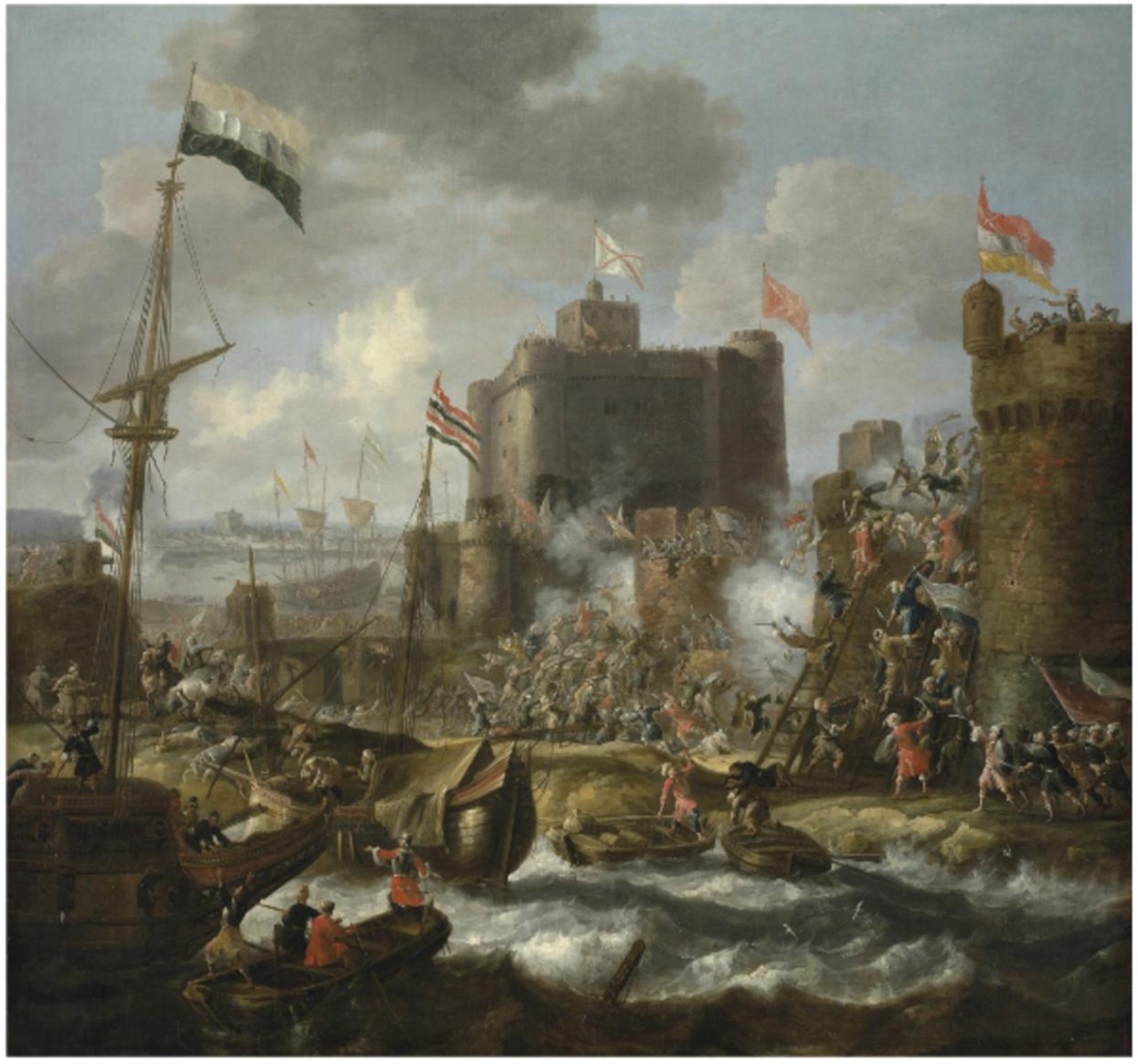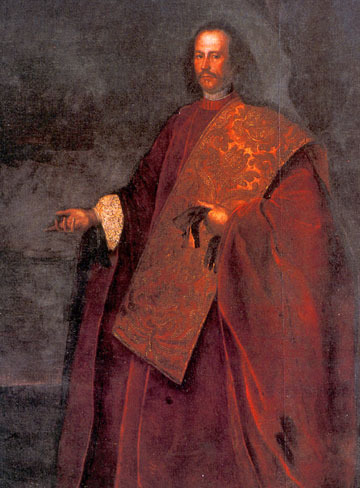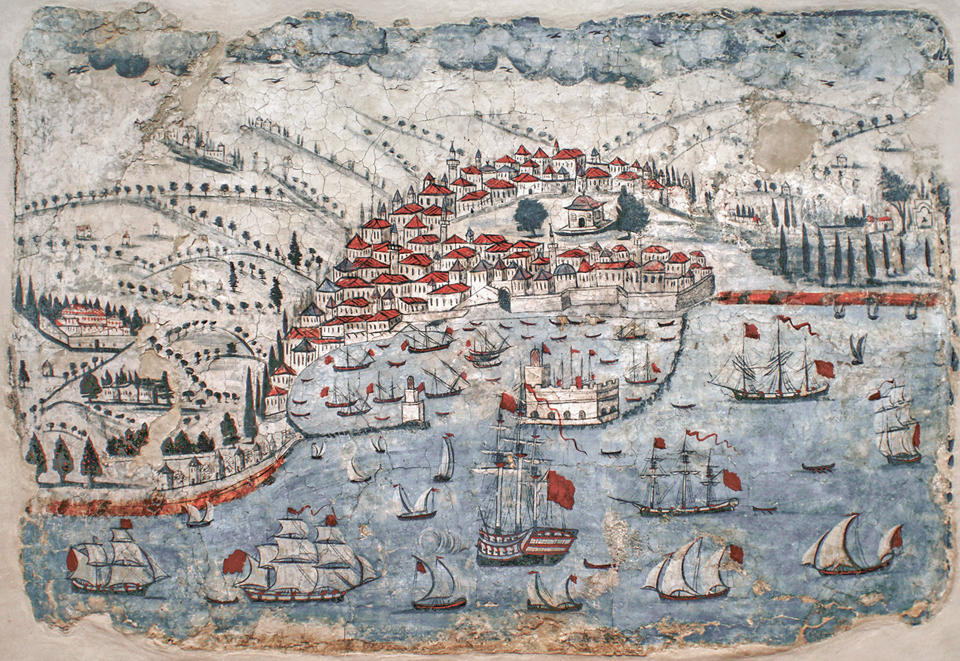Candia, a rival of Troy, or the longest siege


It was not very simple to take this city-fortress by one storm, and this is not about the numerical advantage or talent of the commander. It is necessary first to properly exhaust the enemy before delivering a decisive blow. Therefore, the knowledge of a correct siege has always been extremely highly regarded.
The siege of Candia (present-day Heraklion in Crete) was the longest in the history of mankind and lasted more than 21 years. Lord Byron compared it to the siege of the legendary Troy and called the city “a rival of Troy”, but unfortunately, in the end, Candia fell like Troy.
Begin of the war
The greed of the Maltese Knights Hospitallers was the cause of this whole terrific story. The oldest knightly order, settled in Malta (an island donated to them by Spain) and under protectorate of European powers was engaged in a struggle of Muslim pirates in the Mediterranean. But the knights believed that they were obliged to kill Muslims wherever they could, especially when they themselves (pirate fighters) could rob these infidels. So, since the XIII century, the knights carried out pirate raids on the Egyptian, Lebanese and Syrian coasts and also captured Ottoman ships.
It happened in September 1644, when 6 Maltese galleys attacked and captured a Turkish caravan of ships, going to Egypt. It turned out that on one of them were the former kizlar agha of the Sultan’s harem, the second man in the Ottoman state, who was able to see the Sultan at any time, and the nurse of Sultan’s son with her child. More details about this episode are written in the article “It seems that a person causing the conquest of Crete was a Russian” in our newspaper No. 7, 2018.*
After the battle, the Maltese flotilla entered Crete, which belonged to Venice: although they were not allowed to enter the fortified ports, they used various rarely visited and unsecured harbors, where it replenished supplies, sold trophies and recruited new members of staff, and then returned home. In the port of Valletta the winners were solemnly met, and the news of this battle spread throughout Europe. Of course, the lord of the Ottomans, Sultan Ibrahim I, nicknamed Mad, who was known for his hot temper, found out about the incident. The news infuriated him. With great difficulty, the viziers persuaded him not to begin the execution of Christians in the Ottoman Empire.

Venice and the Ottoman Empire were drawn into confrontation with other states, but were not at war with each other. There was an agreement between them to counter pirates, therefore the ordered attack of the Hospitallers on ships with people from the environment of the Sultan was perceived as a direct act of piracy. Having survived 2 attacks on their fortress, the knights believed that they could indefinitely attack the Ottoman ships and territories without being called to account; and so it happened. The Sultan decided that Malta, the stronghold of the Hospitallers, would not be easy to take, but the knights could not be let down. There was an excellent opportunity to fall upon the old rivals of the Ottoman Empire in the Mediterranean Sea and accomplices of pirates—the Venetians; and the war broke out in 1645.
Throughout the winter of 1644-1645, the Ottoman army was mobilizing, but no one knew where this strike would be delivered. When their fleet left the Dardanelles on April 30, 1645, Christians considered Malta to be its target. The conviction of this was so strong that on the island of Tenos, where they went, they were hospitably met by the Venetian authorities, who were unaware of the start of the war.
It is worth noting that the Hospitallers, the troublemakers, also took part in this war, sending their warships to help the Venetians.
In Crete, in June 1645, the 60,000 strong Ottomans army landed under the command of Yusuf Pasha. By alternately besieging and storming the cities of Crete, the Ottomans slowly occupied the island, except for large or significant coastal fortresses. Yusuf Pasha approached Candia (present-day Heraklion), the capital of the island, by 1648! In the same year, Sultan Ibrahim himself became a victim of a palace coup, but the flywheel of the war with Venice, which he launched, could not be stopped.
“The Turks have in their hands the whole island…, and no one hinders them, because all the Cretans are destitute. Some died of the plague, others died in battles, and still others, not having endured tyranny, scattered around the world. The Venetians own nothing but the metropolis—Candia, which is the head, but without arms and legs”, wrote the Greek Metropolitan Neophytos to the Tsar of Moscow Alexei.
Both sides had intelligence information. Perhaps both of them were helped by the Greeks. The fact is that Venice could not constantly control the captured islands and levied them tribute; and when they refused to pay it, as it was in the fall of 1651 on Samos, they landed troops from the ships and robbed the local Christian inhabitants.
Having a tactical advantage on the island, but experiencing difficulties in regularly supplying such a large contingent, which they slowly but steadily increased, since the blockade of the Dardanelles was periodically lifted due to the need to withdraw the fleet to replenish water and food supplies, the Ottomans proposed to divide Crete within actually controlled territories, but the Venetians refused: in 1662 there was hope for a large fleet of European allies to be assembled.
Siege
Candia was a strong fortress, a miracle of defensive architecture for its time. The Turks managed to block it only from land. The fortress was located very well: on one side it went to the sea and had a well-protected harbor. Venice, even before the siege of Candia, sent a strong fleet to support Crete. Its ships chased after Turkish fleet all over the sea, but could not catch up; and hidden in the bay of Chania Turkish ships were protected by coastal artillery and a chain that blocked the entrance to the bay preventing attacks of Venetian and French fire ships. Chania was occupied by the Turks the very first on the island: it capitulated after the first battle.
In Candia, where the commandant was Grimaldi and the highest authority represented captain-general Francesco Morozini, there were 8-10 thousand people. The Venetians had about 400 guns. Of the Morozini family, at least five people participated in high-level command posts in this war. Two heroically died in naval battles, and one was captured by Turks: he was wounded and tried to escape on a boat from his burning ship in a battle during the blockade of the Dardanelles.

In addition to the dense artillery fire from the city walls, the ships approaching from the sea could also shoot at the advancing ones. The perimeter of the walls was 4.5 km, and their thickness in some places was incredible. An open assault on this bastion-type fortress, in front of which everything was shot through by crossfire, was unsuccessful.
The siege began in May 1648. The supply of the besieged by sea was quite satisfactory, but the large Ottoman army in Crete remained without supply for a long time. Including this is why it did not storm the city for many years only blocking it from land. Its bombardments caused no particular result. This situation continued until 1667, when the Ottomans managed to further increase its army and supply with enough ammunition: a 40-thousand expeditionary force arrived.
On May 22, 1667, the Turkish assault began and with it the last 28-month phase of the siege, which was commanded by the great vizier. The deserters who the vizier gifted came. The most important was Colonel Andreas Barotsis, who explained the weak points of the fortifications and the situation there. In the ensuing bloody assault, there were killed more than 108 thousand Turks and 29 thousand Christians.
Fall of Candia
In June 1669, the defenders of the city had the last hope: a French expeditionary force came to their aid: 6 thousand under the command of the Duke de Beaufort. On the night of June 16, they made an initial successful outing from the fortress, but a powder depot exploded in the position they seized, resulting in great casualties; and the Ottomans inspired by this counterattacked. French losses were 800 along with the duke. On July 6, a second, but already smaller group of French arrived, as well as the ships of Pope and Malta, which allowed a second sortie on July 25. It was carried out with the support of the ships’ artillery, but the Ottoman coastal artillery, responding, fell into the gunpowder cellar of a French battle ship, on which almost the entire crew died—286 people. Another one and a half hundred Frenchmen died that day at other sites. Flagships of France, Pope and 1 large Venetian ship were damaged by that blow.

The next day, another 2 thousand people arrived to help Candia, but by this time the unity of the Allied fleet was shattered, and the French refused to do anything else, believing that they were not properly supported. It seems that then they began to have diseases, and on August 21 they took their contingent and sailed away. Together with them, the Maltese and papal ships simultaneously left. It is not known exactly what prompted them to a joint action, but it is worth remembering that the Venetians had a reputation for people who easily sacrificed their allies and appropriated other people’s trophies; and the Maltese generally looked at the war as a way of robbery, and always found an excuse to leave the Venetians when the latter suffered heavy losses.
In this situation, the defense of Candia became hopeless; and Morozini began negotiations with the vizier about the surrender of Candia and the conclusion of peace. On September 6, an agreement was reached that all of Crete remained Turkish, with the exception of three fortifications in Souda, Grabouza and Spinalonga. The garrison was given the right to board the ships, leaving all the unloaded artillery.
On September 26, the fleet left the city, which the Turks entered the next day. The longest siege in history, lasting 21 years (1648 – 1669), finally ended.
As a result of this war lost by Venice, Crete became a Turkish province and remained there until 1898. The balance of power in the Eastern Mediterranean changed: the Ottoman Empire established dominance over this region, and Venice virtually ceased to be an empire.
Composed by Victor Dubrovskiy
April 2020